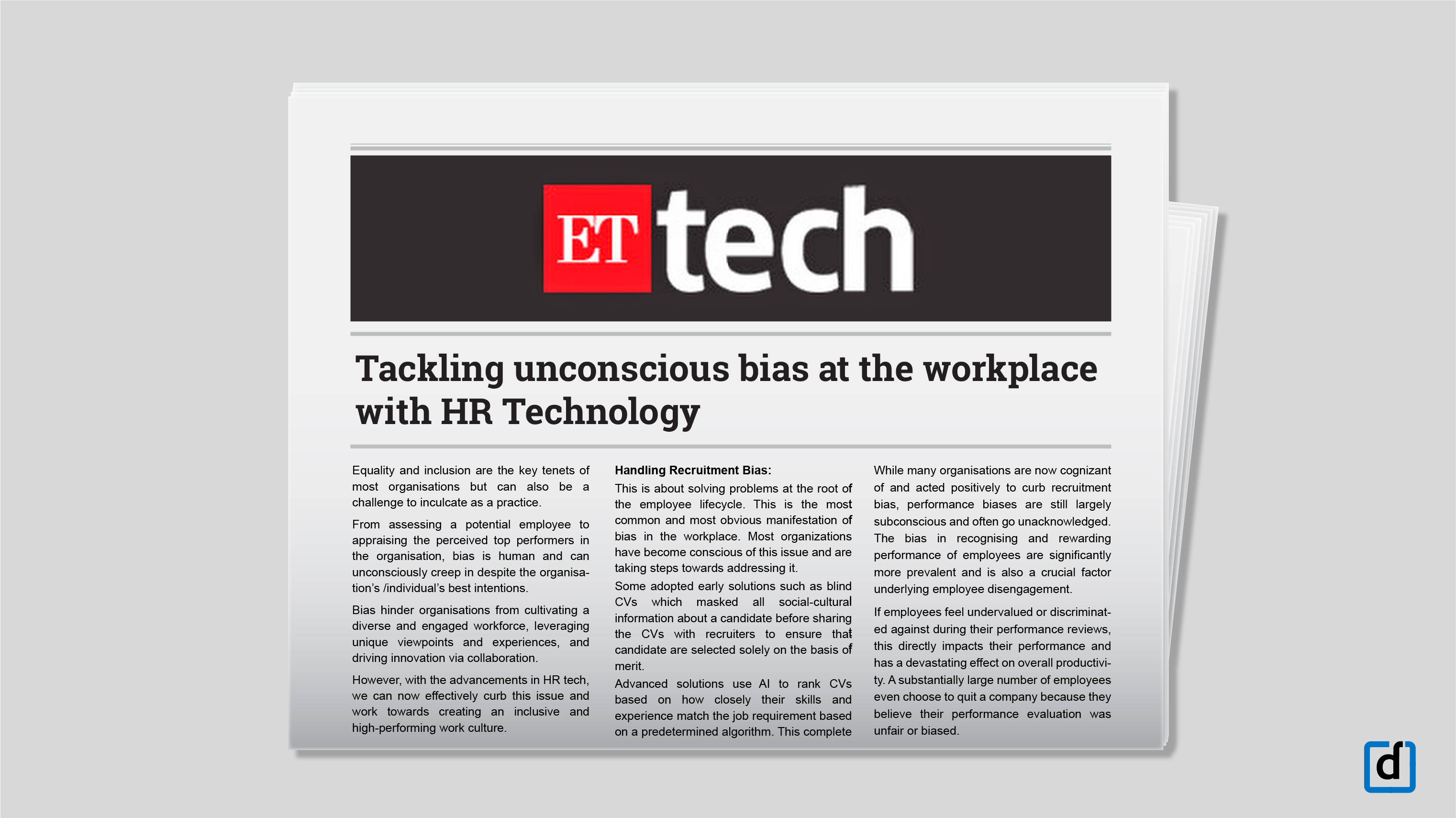
.png)
Equality and inclusion are the key tenets of most organisations but can also be a challenge to inculcate as a practice. From assessing a potential employee to appraising the perceived top performers in the organisation, bias is human and can unconsciously creep in despite the organisation’s /individual’s best intentions.
Bias hinder organisations from cultivating a diverse and engaged workforce, leveraging unique viewpoints and experiences, and driving innovation via collaboration. However, with the advancements in HR tech, we can now effectively curb this issue and work towards creating an inclusive and high-performing work culture.
Handling Recruitment Bias:
This is about solving problems at the root of the employee lifecycle. This is the most common and most obvious manifestation of bias in the workplace. Most organizations have become conscious of this issue and are taking steps towards addressing it.
Some adopted early solutions such as blind CVs which masked all social-cultural information about a candidate before sharing the CVs with recruiters to ensure that candidate are selected solely on the basis of merit.
Advanced solutions use AI to rank CVs based on how closely their skills and experience match the job requirement based on a predetermined algorithm. This completely eliminates personal preferences for a particular background, alumni or pedigree.
Today, technology can also be used to control if the feedback of one interviewer should be shown to the other and how it is shown, thus ensuring bias is not carried forward and independent opinions can be formed through his/her personal engagement with the candidate.
Addressing Performance Bias:
While many organisations are now cognizant of and acted positively to curb recruitment bias, performance biases are still largely subconscious and often go unacknowledged. The bias in recognising and rewarding performance of employees are significantly more prevalent and is also a crucial factor underlying employee disengagement.
If employees feel undervalued or discriminated against during their performance reviews, this directly impacts their performance and has a devastating effect on overall productivity. A substantially large number of employees even choose to quit a company because they believe their performance evaluation was unfair or biased.
The Global Workforce Leadership Survey highlighted that employees no longer want an annual performance review but regular, constructive conversations (in an open, mentoring and coaching atmosphere) that aids their development throughout the calendar year.
Research has also demonstrated that the perceived fairness of the performance process has a direct impact on organisational commitment and job satisfaction among employees.
To ensure employees remain motivated and attrition is controlled HR now looks for technology solutions to make the appraisal process transparent and unbiased. However, for large enterprises with 10,000 or more employees, the bigger challenge is to also maintain consistency and the same benchmarks of success across the organisation irrespective of the individual manager leading the performance evaluation.
Here are some of the ways in which technology can overcome bias in performance reviews at the workplace:
- Continuous feedback: A major step towards eliminating bias in performance process starts with making the process more continuous and collaborative. This allows employees and managers to share instant feedback throughout the year with peers and team members outside of just the traditional hierarchy.
If employed effectively, it will make the process more holistic and prevent the risk of one individual's bias overpowering the entire evaluation.
New age enterprises like Myntra, Paytm & Delhivery have embraced continuous as well as 360-degree to cater to the dynamic work roles that exist in the organisation. Myntra has witnessed extreme high adoption of this feature during the annual cycle as well with more than 10,000 feedbacks being shared in the organisation.
- Performance Journals: This feature allows employees and managers to keep a record of the critical incidents over the course of the appraisal cycle. This allows manager and employee to have a snapshot of the work done over the course of the year and effectively eliminates recency bias during the final review process.
- Objective goal-based rewards: While the above solutions work great for a few roles, sometimes the solution is as simple as rewarding employees based on objective outcomes. In such scenarios, technology can be used to enable direct integration with the concerned system of record to retrieve objective data on goal achievement and reward employees accordingly.
- Intermediate check-ins: Organisations can also mandate a monthly, quarterly or bi-annual check-in to ensure both the manager and employee are discussing and commenting on the progress and performance on the goals set for the employee.
The information from check-ins can be used as just subjective inputs and reference point for the final review or can also be given a substantial weightage in the overall rating calculated at the end of the year. This approach ensures that there is alignment of performance expectations and perception between the employee and the manager and provides scope to rectify any bias.
- 360-degree Feedback: The 360-feedback mechanism can be triggered to all stakeholders including the peers, reportees, superiors and external customers alongside the performance review process. This ensures individual bias is overcome by bringing about the contrast of perceived performance by different stakeholders.
Source: ET Tech



Speak Your Mind